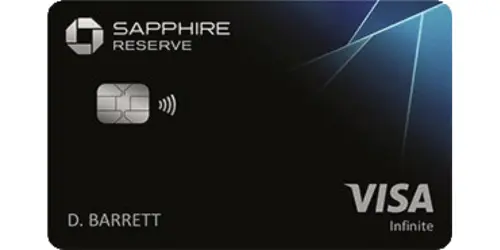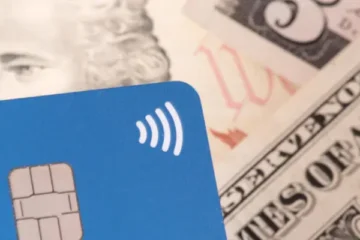How to Apply for the Chase Sapphire Reserve
If you’re thinking about getting a credit card that actually gives you real perks — like travel points, VIP airport lounge access, and boosted cashback — then you’ve probably come across the Chase Sapphire Reserve. But here’s the big question: is this high-annual-fee card really worth it?
Advertisement
Stick with this article because we’re going to break it all down for you. No fluff, no complicated talk. Let’s go?
Advertisement
How to Request the Chase Sapphire Reserve
Thinking about getting the Chase Sapphire Reserve? Whether it’s the travel perks, the welcome bonus, or just wanting a premium card in your wallet — applying is pretty straightforward. But since this is a high-end card, Chase will take a close look at your credit and income.
So it’s smart to know what you’ll need ahead of time. Below is a step-by-step guide to help you apply with confidence — no confusion, no guesswork.
Advertisement
Step-by-step guide to apply:
- Go to the official Chase website – Head over to www.chase.com using your phone or computer.
- Search for “Chase Sapphire Reserve” – Or just click the Credit Cards section and find it under Travel Cards.
- Click “Apply Now” – This will take you to the application form.
- Fill in your details – You’ll need to enter info like your name, address, income, employment, and Social Security Number.
- Double-check everything – Make sure your info is accurate before submitting.
- Submit and wait – Some people get approved right away. Others may need to wait a few business days for a decision.
Chase will run a hard inquiry on your credit. So if your credit score isn’t looking good, it might be better to work on it a bit before applying. Most approvals go to people with scores above 700.
What Is the Chase Sapphire Reserve?

Let’s start with the basics: the Chase Sapphire Reserve is a premium credit card from Chase Bank, mainly designed for folks who travel often or spend a lot on dining and experiences. It’s part of the Ultimate Rewards program, which is a super flexible points system.
Unlike basic cashback cards, the Reserve gives you access to a bunch of serious perks — like travel credits, insurance, VIP airport lounges, and more.
But to qualify, you’ll need solid credit and a stable income. And yes, it comes with a high annual fee, so it’s not for everyone.
What Are the Benefits of the Chase Sapphire Reserve?
Here’s where the Chase Sapphire Reserve really proves it’s not just another fancy credit card. The perks go way beyond basic points or cashback — we’re talking about real value, especially if you travel, eat out, or just want a card that works harder for you.
When used right, these benefits can easily cover the card’s annual fee — and then some. Whether it’s free airport lounge access, top-tier travel insurance, or credits that help you save money every year, this card is built for people who want more without jumping through hoops.
Here’s a breakdown of what you get:
- 3 points per dollar on travel (flights, hotels, Uber, etc.)
- 3 points per dollar on dining, including takeout and delivery
- 1 point per dollar on everything else
- $300 per year in automatic travel credit
- Free Priority Pass membership (access to 1,000+ airport lounges worldwide)
- Full travel insurance (trip cancellation, delays, lost baggage, medical emergencies)
- No foreign transaction fees
- Purchase protection and extended warranty
If you spend even a little on travel or food, the $300 travel credit and lounge access alone can pay off big — and that’s just the beginning.
How Much Does the Chase Sapphire Reserve Cost?
Let’s talk numbers — because the annual fee is where a lot of people pause. The Chase Sapphire Reserve comes with a $550 yearly fee, which definitely puts it in the “premium card” category.
But don’t let that number scare you off just yet.
One of the biggest perks kicks in automatically: a $300 annual travel credit. That means every year, the first $300 you spend on travel (like flights, hotels, Uber, tolls, etc.) gets reimbursed — no extra steps needed. So in reality, the net cost drops to around $250.
And if you’re taking advantage of everything the card offers — like lounge access, travel insurance, and higher point earnings — that $250 can easily pay for itself.
Thinking of adding someone else to your account? Authorized users cost $75 per year each. It could be worth it if they also travel often or you want to share the perks — but if not, maybe keep the account to yourself.
What’s the Starting Credit Limit for the Chase Sapphire Reserve?
Since the Chase Sapphire Reserve is considered a premium credit card, the starting credit limit tends to be on the higher side — way above what you’d get with a basic or entry-level card.
Most people approved for the card report an initial limit somewhere between $10,000 and $20,000, depending on factors like your credit score, income, and overall financial profile.
If you’ve got excellent credit and a solid income, don’t be surprised if your limit lands on the higher end — or even beyond $20K. But if your profile is good (not perfect, just solid), you can typically expect a starting limit around $10,000.
Keep in mind: this isn’t a guaranteed number. Chase looks at your full financial picture — so if you want a higher limit, having low debt, a clean credit report, and a good payment history definitely helps.
How Do Chase Sapphire Reserve Points Work?
One of the biggest reasons people go for the Chase Sapphire Reserve is the rewards — and they’re not just for show. Every dollar you spend earns points in the Chase Ultimate Rewards program, which is known for being super flexible and packed with value.
But here’s the key: not all redemptions are created equal. Depending on how you use your points, you could stretch them way further — or end up getting less than they’re really worth.
Let’s break down the best ways to use your points so you actually get the most out of every swipe:
- Book travel through the Chase portal – Each point is worth 1.5 cents here. That means 60,000 points = $900 in travel.
- Transfer to travel partners – Send your points to airlines and hotel programs like United, Southwest, Marriott, Hyatt, and others.
- Redeem for cashback – You can cash out, but each point is worth less (usually 1 cent or under).
- Use “Pay Yourself Back” – Use points to erase certain purchases like groceries, dining, or donations (availability varies).
- Get gift cards – Choose from big names like Amazon, Apple, Best Buy, and more.
Want the best value? Stick with travel bookings or point transfers — that’s where the real magic happens.
Does the Chase Sapphire Reserve Have a Welcome Bonus?
Absolutely — and it’s one of the biggest reasons people go after this card.
Right now, if you spend $4,000 within the first 3 months, you’ll earn a 60,000-point welcome bonus. When redeemed through the Chase travel portal, those points are worth up to $900 — enough to cover a round-trip flight, a few hotel nights, or even both, depending on how you book.
Just keep in mind: these offers can change, so it’s always a good idea to check the Chase website to confirm the current deal before applying.
Smart tip? Don’t spend money just to chase the bonus. Instead, plan to use the card for your regular bills, insurance, groceries, or any big expenses you already had coming — that way, you hit the $4,000 goal without going into debt or overspending.
What Are the Downsides of the Chase Sapphire Reserve?

The Chase Sapphire Reserve has a lot going for it — but it’s not for everyone. Like any premium card, there are a few downsides you should seriously consider before applying.
First off, there’s the $550 annual fee. That’s a big number, and if you’re not taking full advantage of the perks — like the travel credit, lounge access, or rewards — you might not get your money’s worth.
Second, this card isn’t easy to qualify for. You’ll typically need good to excellent credit, usually a score above 700. If your credit history is limited or you’ve had recent issues, your chances of approval go down.
Lastly, if you don’t travel much or rarely eat out, a lot of the card’s top benefits — like the 3x points on travel and dining or the airport lounge access — won’t really apply to your day-to-day life. In that case, you might be better off with a no-fee card or something more basic that fits your spending habits.
Bottom line? The Sapphire Reserve is powerful, but only if it actually matches your lifestyle.
Is the Chase Sapphire Reserve Worth It?
That really comes down to how you live and spend your money.
If you travel a few times a year, eat out regularly, and like having extra comfort and protection when you’re on the go, this card can absolutely be worth it. With the $300 travel credit, VIP lounge access, strong travel insurance, and 3x points on travel and dining, it’s not hard to make the annual fee pay for itself.
But if you rarely travel, prefer to keep things simple, or are on a tighter budget, there’s no shame in going for a no annual fee card. There are plenty of great options that offer solid rewards without the premium price tag.
It’s not about whether the card is good — it’s about whether it’s good for you.
Tips to Get the Most Out of Your Chase Sapphire Reserve
So you’ve got the Chase Sapphire Reserve, or you’re seriously thinking about it. Great choice. But having the card is just the first step. To really make it worth the annual fee, you need to use the perks the right way.
A lot of people leave money on the table simply because they don’t take advantage of everything this card offers. Whether it’s travel credits, lounge access, or smart ways to redeem your points, every benefit has value if you know how to use it.
- Always use the $300 travel credit every year — it’s basically free money.
- Activate and use the Priority Pass for free airport lounge access.
- Use the card for all travel and dining purchases to earn 3x points.
- Pair it with a no-fee card like the Chase Freedom Unlimited to rack up points even faster.
- Transfer points to airline partners for potentially huge value on flights.
- Learn how to use the travel and purchase insurance benefits — they’re incredibly useful in emergencies.
The Chase Sapphire Reserve is a complete package, full of perks — but it comes at a price. It’s not a card for someone who just wants to buy groceries and pay bills. It’s built for people who want travel benefits, reward flexibility, and peace of mind when they’re on the go.
If that sounds like you, it might be one of the best credit cards you’ll find in 2025. But if not, no worries — there are plenty of other solid cards out there to match your needs.





